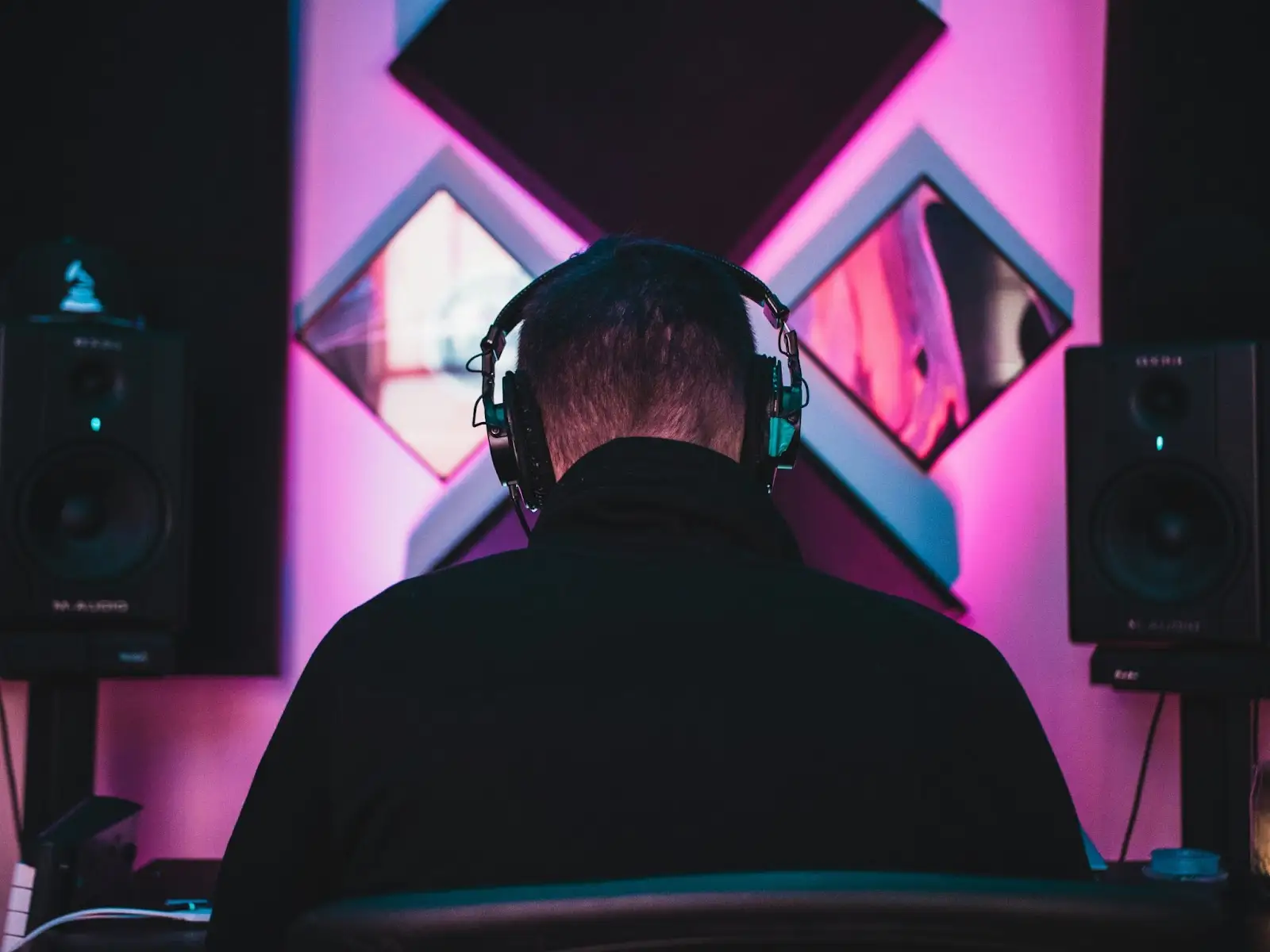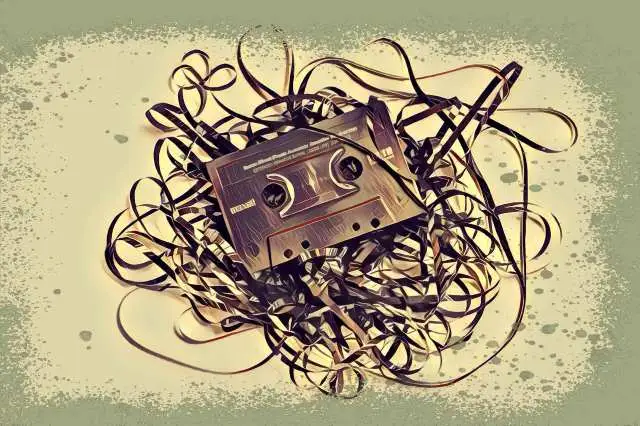Like Nickelback, minimal music sometimes gets a bad rap. It's easy to make. It's cheap. It doesn't go anywhere. Minimalist composers are lazy.
You get my drift.
While minimalist music (like any form of music) has the potential to be less-than-stellar, the reality is that it can be pretty darn cool, whether you're making it or listening to it.
It began, as all cool things do, as a reaction against mainstream conventions in Western music. Since its early days in New York City, the genre has gone on to influence many genres and inspire composers around the globe.
If you're new to this musical style, you've come to the right place. In this article, we'll be looking at a brief history and the growth of minimal music, who the prominent minimalist composers are, key characteristics of the style, and how to start making your own minimalist music.
Sitting comfortably? Let's begin....
Historical Context: The Birth of Minimalist Music
Early Influences
Minimal music emerged from the heady melting pot of 1960's New York City, but poke a little further back in classical music history and you'll find experimental composers paving the way for the style to evolve.
Between the back end of the 19th century and the beginning of the 20th century, Erik Satie broke the mold of the classical world with his approach to composition. His early works for solo piano conveyed beautiful simplicity while other composers were firing on all cylinders.
For example, the first three pieces in Satie's Gnossiennes for solo piano are in free time; they don't have bar lines or time signatures. This may not seem like a big deal if you're a fan of Brian Eno, but at the time this was a pretty radical approach to composition.
Skipping forward in time, the work of John Cage made people think twice about what constituted music. His famous 4'33'' was first performed in 1952, and quickly sparked controversy by virtue of the fact that none of the performers played a single note. It was all about 'the absence of intended sounds'.
Influences from non-Western music traditions also pre-date the birth of minimal music. African rhythms, Hindustani classical music, and 'ethnic' instruments like the gamelan had been around for a long time before American minimal music burst on to the scene.
The Rise of Minimal Music
It's not clear where the term minimal music originates from, but the musical style as we understand it today first began to appear as part of the Avant Garde music scene on the West Coast in the late 1950s. It later expanded to New York, where it found a kindred spirit in the New York Hypnotic School - a form of experimental music at the time.
It wasn't just music that was inspired by the concept of minimalism. Nearly every form of art was responding to the idea of less is more, with endless underground activity taking place in literature, painting, sculpture, and film to create minimal art. In fact, many early performances of minimal music took place in art galleries and lofts rather than traditional concert venues.
The Pioneers: Early Minimalist Composers
The minimalist music movement originally involved dozens of unnamed composers. Out of the melée, four key people emerged as the most prominent minimalist composers of the time. All four American composers were born within a couple of years of each other, and all studied traditional Western classical music.
And, as is generally typical of music history, all of these composers are also white and male. Sigh.
La Monte Young
La Monte Young is probably the least known of this group. Referred to as 'the daddy of us all' by Brian Eno, he is best known for his use of long sustained tones in his work.
In fact, while he was studying at Berkeley as a graduate student, his composition tutor refused to grade his composition Trio for Strings as it consisted of only three, very long notes. Little did they know this penchant for drones would later become pioneering work.
La Monte Young's dream music, as it was called originally, formed the backbone of the music collective Theatre of Eternal Music , and is given a nod of appreciation in the notes for Lou Reed's 1975 album Metal Machine Music .
It's safe to say that while La Monte Young hasn't released a lot of recorded material in his lifetime, his influence has been felt the world over.
Terry Riley
Terry Riley is both a friend and collaborator of Young's, but explores minimalism though repetition, particularly through the use of tape loops and delay.
Riley's use of repetition wasn't restricted to the electronic realm; one of his best known works, In C , uses a similar process for live instruments. One performer provides a rhythmic foundation (on C, naturally), while the other performers (of which there can be any number, on any instrument) perform their way through 53 melodic cells, with only a few basic suggestions to guide them. The result is fascinating, and hypnotic.
With his focus on modular composition one might say Terry Riley is the original Ableton. Whether a music critic would agree is a different matter, but either way Riley has heavily influenced not only experimental music but also rock, and contemporary electronic music.
(Side note: check out his Mescalin Mix for a creepy taste of what Riley's early music sounded like.)
Steve Reich
This modular approach to creating music was also a favorite of Steve Reich. In Reich's case he explores a technique called phase shifting, where the same material is performed but each part starts at a slightly different time and may play at a subtly different tempo.
Steve Reich started his experiments in the minimal music using tape; early compositions include It's Gonna Rain (1965), and Come Out (1966). Both works are classic examples of phase shifting in action, offering an early glimpse of the sampling techniques that would later define electronic music.
Like Riley, Steve Reich applied his methodology for minimal music to acoustic instruments. Piano Phase (1967) recreates the tape loop effect using two pianos. Each piano plays the same melodic line in unison, but one piano gradually speeds up. Because it's all live, no two performances are the same (although you can of course listen to a recording).
Later in his career Reich became more interested in using percussion instruments in interlocking rhythmic patterns, similar to the polyrhythms found in African drumming.
Philip Glass
Perhaps one of the best known American composers of contemporary music is Philip Glass.
Like Young, Reich and Riley, Philip Glass was in New York as early minimal music was taking shape, studying at Juilliard. It wasn't until 1967, when he returned from stints in France and India, that Glass began paying attention to, and being influenced by the work of Steve Reich.
Like Reich, Glass drew early sponsorship from art galleries, his music presented with visual art minimalists in unconventional venues.
His ensembles comprise organs, pianos, and wind instruments, particularly saxophones, as well as more idiosyncratic instrumentation, such as amplified tabletop. Glass's music is easily recognizable, blending Indian music, minimalism, and his own personal style, born out of long hours listening with his father to records from the family-owned music store.
In addition to being associated with early minimalism, Glass's music has been heard in films, in opera houses, and on the Broadway stage. This is in addition to the numerous solo and chamber music pieces, and works for string quartet and small instrumental ensembles.
Quite a prolific guy, for a minimalist.
Features of Minimalist Music
So we know how minimalist music came about, and who was at the forefront of the scene. Let's take a look at minimalist traits in music.
Limited or Minimal Materials
By its very definition, minimal music can include anything created for very limited instruments. This might be one basic electronic rumble underneath a looping saxophone sound, or a group of eclectic 'found sound' instruments, like a saucepan and seatbelt.
Pieces that use only a few words of text (such as Steve Reich's aforementioned It's Gonna Rain) are also minimalist, as are pieces that use only a few notes throughout the whole piece (not you Nickelback).
Repetition & Cycles
Music that includes short musical patterns or cells repeated over extended periods can be considered minimalist. Terry Riley and Steve Reich both embraced the idea of repetition in their work, and Philip Glass is well known for his use of repetitive structures as his music moves in endless circles.
Gradual Evolution
Simply repeating a phrase over and over again will quickly get old, so the idea of introducing subtle variations or additions over time is one of the prominent features of minimalism. Steve Reich was a master of this with his phase shifting technique.
Pulse Driven Rhythms
Simple, pulse driven rhythms that give off a hypnotic quality are also a characteristic of minimal music. Philip Glass is well known for the rhythmic qualities in his music, a quality that went on to influence contemporary styles of music like rock and EDM.
Audience Perception
Trying to pin down a particular style or genre of music is always tricky. Nothing is ever going to fit conveniently into a 'minimalist' or 'pop music' shaped hole. Similarly, not all of the above features need to be present for music to be minimal, and nor does having these features to a greater or lesser degree make a piece of music minimalist.
Perhaps the most important aspect of minimal music is how it allows the audience (or forces them, depending on how you look at it) to focus on what's happening in the music.
Unlike musical entertainment presented as a story or a journey, the experience of listening to minimal music involves paying attention to what's happening in the music itself.
A piece of music that consists of only two or three notes played over, say, fifteen minutes forces the listener to really concentrate on the performance, and makes listening play active role in the music.
I'd argue this is what makes music minimalist.
How to Create Minimalist Music

If you have your eyes set on becoming the next Philip Glass or John Adams you'll need to start writing some minimal music! Here's some ideas to get you started.
Choose your focus
Decide on the foundational element of your piece. This could be:
- a rhythm
- a harmony, such as an open fifth, or a major third
- a melody
- a snippet of speech (make sure you have the rights to do this if you plan on releasing your work though!)
Minimalist composers often build their entire compositions from a single idea, so pick one basic element as the cornerstone for your piece.
Whatever you choose, make sure it's short. If you're going the La Monte Young route of long sustained notes that's fine - the initial idea will still be short!
Create a repetitive pattern
Once you have chosen your foundation, use it to create a repetitive pattern.
If you're using a rhythm, program it or record it using untuned percussion instruments - you can always add more tuned instruments later.
If it's a melody, record that and loop it.
If it's a harmony, use a sustained sound like a synth pad to program the harmony, sustaining it over a period of time. (Pro tip: Bounce this out as audio rather than use MIDI, so you'll hear the sound wherever you start playback from) .
The hypnotic effect of minimalism comes from constant repetition, creating a meditative feel.
Limit your palette
Now that you have the foundation mapped out, it's time to start thinking about how things will evolve over time. For starters you'll need to build your sound palette.
Whether you're using electronic instruments or recording acoustically, restrict the number of instruments you use in the piece to just a handful. This will help you get into the minimalist mindset and prevent things getting too cluttered. It'll force you to think more deeply about how things can change over time.
Even if you're planning on building a growing wall of sound around one harmony, it's a good idea to use multiple versions of only a handful of different instruments.
Introduce small variations
Pick one element and gradually change it.
If you've started off with one instrument playing a simple melody ostinato, try gradually bringing in a second instrument, then a third.
Alternatively, experiment with adding or removing a note from your pattern, or if you have two instruments playing the same motif adjust the timing of one so it shifts out of phase.
Dynamics are another good way of introducing subtle variations to a repetitive idea while maintaining the core identity of the music.
Experiment with layering
If you've started off with one instrument playing a simple melody ostinato, gradually bring in a second instrument, then a third.
Combine this step with the previous one by introducing variations into these new layers.
Embrace technology
Electronic tools like DAWs, hardware sequencers, and looper pedals make creating minimal music accessible to all, so make use of them. There's plenty of free tools out there to help you with this!
In addition to the sampling and looping capabilities offered by practically every DAW , digital effects can be used to create a sense of space. Explore how changing parameters on a delay or reverb plugin using automation can generate wild and wonderful minimal music from just one idea.
Challenge yourself
Set yourself limitations for each project you work on, for instance:
- record using only your voice
- record 30 minutes of music without editing
- use only one sound, and multiple effects
- use multiple sounds, and only one effect
- change the time signature on every measure
If you've never tried writing in the minimalist style before, you may be surprised how difficult it can be to strip things back. The key with minimalism is simplicity and the reduced number of instruments involved. To make experimental music you have to keep experimenting!
The Legacy of Minimalist Music
Minimalist music has come a long way from various unnamed composers and unidentified performance art pieces in 1960s New York. Minimalism has made a lasting impression on classical music, EDM, rock, and even film music.
Composers like Max Richter and Jóhann Jóhannsson blend minimalist repetition with lush orchestration to create emotionally resonant works that have reached a broad audience. Richter's Sleep is a showcase of the expressive fluidity and meditative qualities of minimalism.
Electronic musicians have also been profoundly influenced by minimalism. Jon Hopkins, Nihls Frahm, and of course Brian Eno have all adopted minimalist process techniques like repetition, looping patterns, and gradual textural shifts to build immersive soundscapes.
Even the current king of film scoring, Hans Zimmer, employs minimalist techniques. Check out his score for Interstellar to hear slow harmonic shifts reminiscent of Steve Reich's phasing experiments.
Minimalism's emphasis on repetition, simplicity, and gradual transformation continues to inspire more than a few composers across many genres, proving its impact is as enduring as it is expansive.
If you're looking for inspiration to write new music in the minimal style, or you simply want to immerse yourself in the genre, I highly recommend taking a listen to this excellent introductory playlist .
Now go forth and minimalizeth the music!





